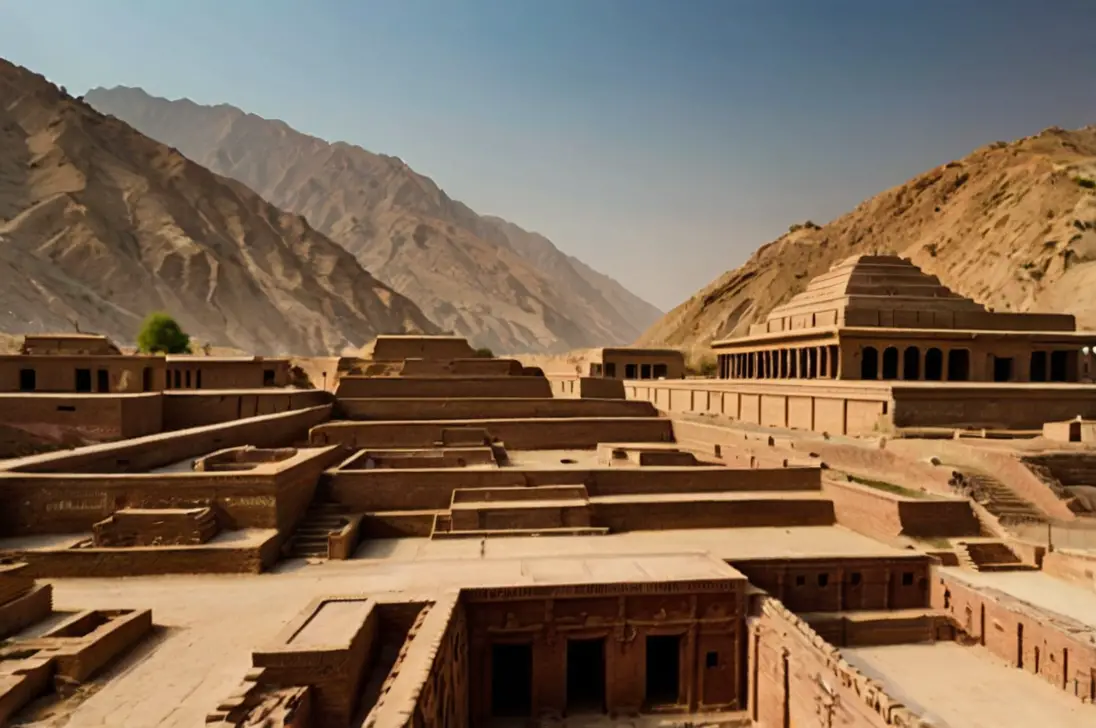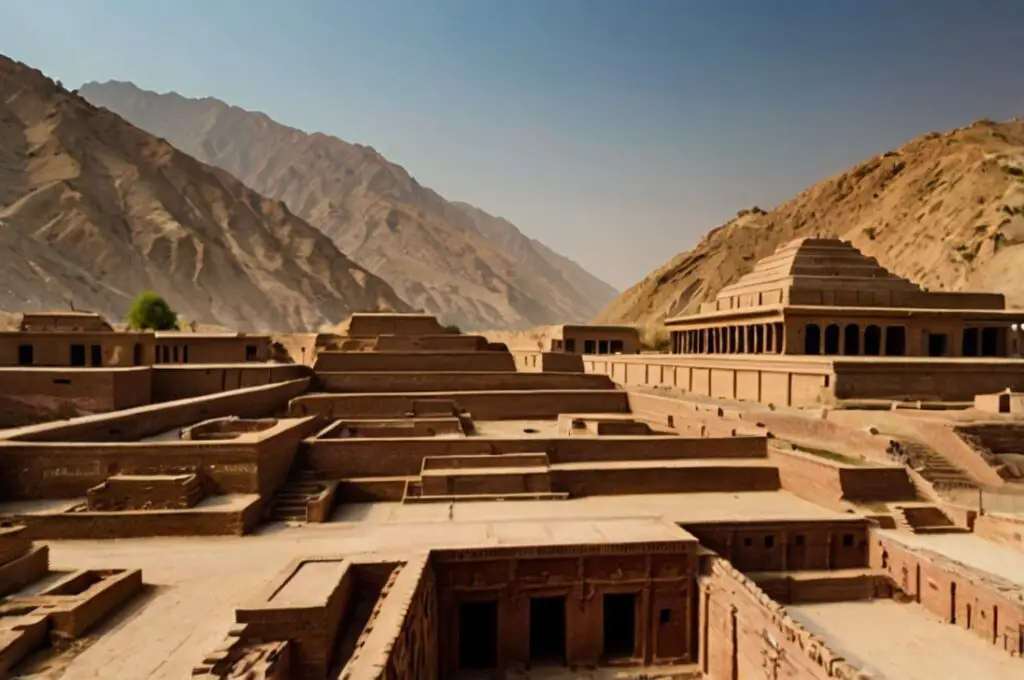
The Indus Valley Civilization, which flourished between 3300 and 1300 BCE, is one of the most fascinating and enigmatic ancient civilizations known to humanity.
Spanning across modern-day Pakistan and northwestern India, this civilization left behind a rich legacy of urban planning, engineering feats, and sophisticated crafts.
In this article, we’ll delve into the rise and fall of the Indus Valley Civilization, exploring the factors that contributed to its growth and decline.
The Rise of the Indus Valley Civilization
The Indus Valley Civilization, one of the world’s earliest urban cultures, flourished in the northwestern regions of South Asia around 3300 to 1900 BCE.
This remarkable civilization is noted for its advanced urban planning, impressive engineering, and rich cultural heritage.
- Read also: Journey Through Time: A Glimpse into the Sumerian Civilization Timeline
- Read also: Akkadian Empire Timeline: A Journey through Ancient History
Development of early Harappan Settlements (3300-2600 BCE)
The roots of the Indus Valley Civilization can be traced back to the Early Harappan period, from approximately 3300 to 2600 BCE.
During this time, small farming communities began to emerge along the fertile plains of the Indus River.
These early settlements marked a significant shift from a Neolithic way of life, characterized by simple farming and stone tools, to a more advanced Chalcolithic society that utilized copper and bronze.
Key Developments
Agriculture and trade
The Early Harappans developed sophisticated agricultural practices, cultivating crops such as wheat, barley, and peas.
They also began to domesticate animals like cattle, sheep, and goats.
This agricultural surplus supported growing populations and facilitated trade with neighboring regions.
Regionalization and cultural exchange
As these communities grew, they started to engage in regional trade and cultural exchange.
They traded goods such as pottery, tools, and ornaments, which helped to spread ideas and technologies across different areas.
This interaction laid the groundwork for a more interconnected and complex society.
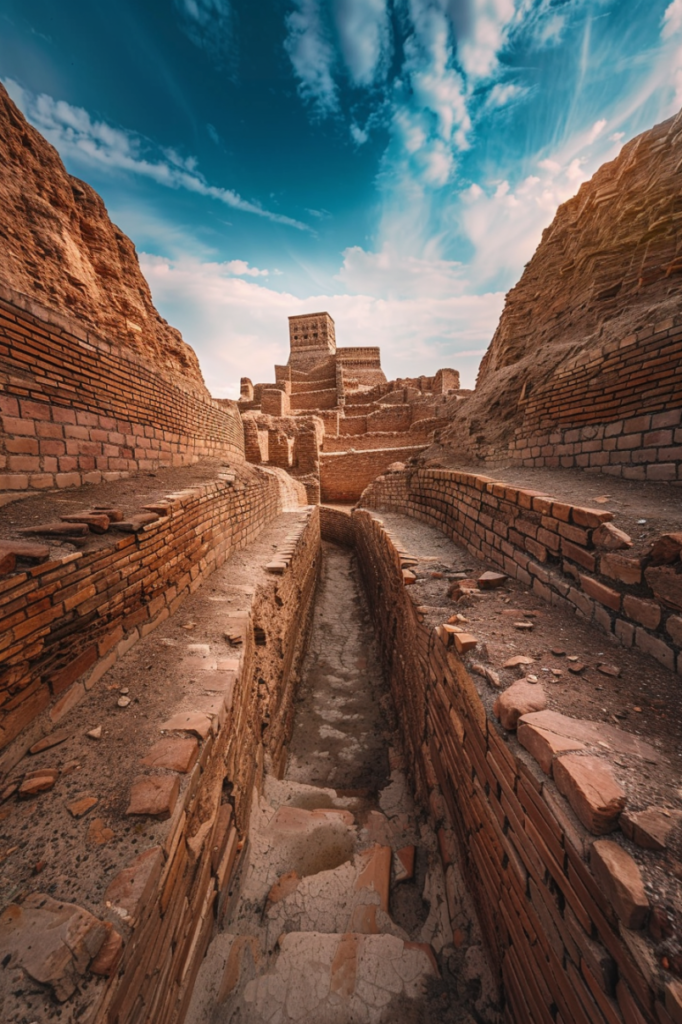
The flourishing Harappan Era (2600-1900 BCE)
The peak of the Indus Valley Civilization, known as the Mature Harappan period, spanned from 2600 to 1900 BCE.
During this time, the civilization saw the rise of major urban centers like Mohenjo-daro and Harappa, which were marvels of ancient urban planning and engineering.
Key features
Urban centers
Cities like Mohenjo-daro and Harappa were well-organized, with meticulously planned streets laid out in a grid pattern.
These cities featured sophisticated drainage systems to manage water and waste, which underscored the community’s emphasis on hygiene and public health.
Multi-story buildings made of baked bricks demonstrated advanced construction techniques.
Engineering feats
The Harappans were skilled engineers.
They built impressive structures such as granaries for storing surplus grain, water wells to ensure a reliable water supply, and public baths for communal use.
These innovations highlight their advanced understanding of urban infrastructure.
Writing system
The Indus script, a unique writing system developed during this period, remains undeciphered to this day.
However, it is evident from various inscriptions on seals, pottery, and other artifacts that the Harappans had a complex system of communication.
Sophisticated crafts
Harappan society was rich in craftsmanship.
Artisans produced a wide range of goods, including intricately designed pottery, beads, metalwork, and sculptures.
These crafts not only served local needs but were also traded with distant regions, showcasing the civilization’s artistic and commercial prowess.
Social structure and professions
Evidence suggests a highly organized social structure with specialized professions.
There were farmers, traders, artisans, priests, and administrators, each contributing to the community’s prosperity.
The existence of standardized weights and measures indicates a regulated economic system that facilitated trade and commerce.
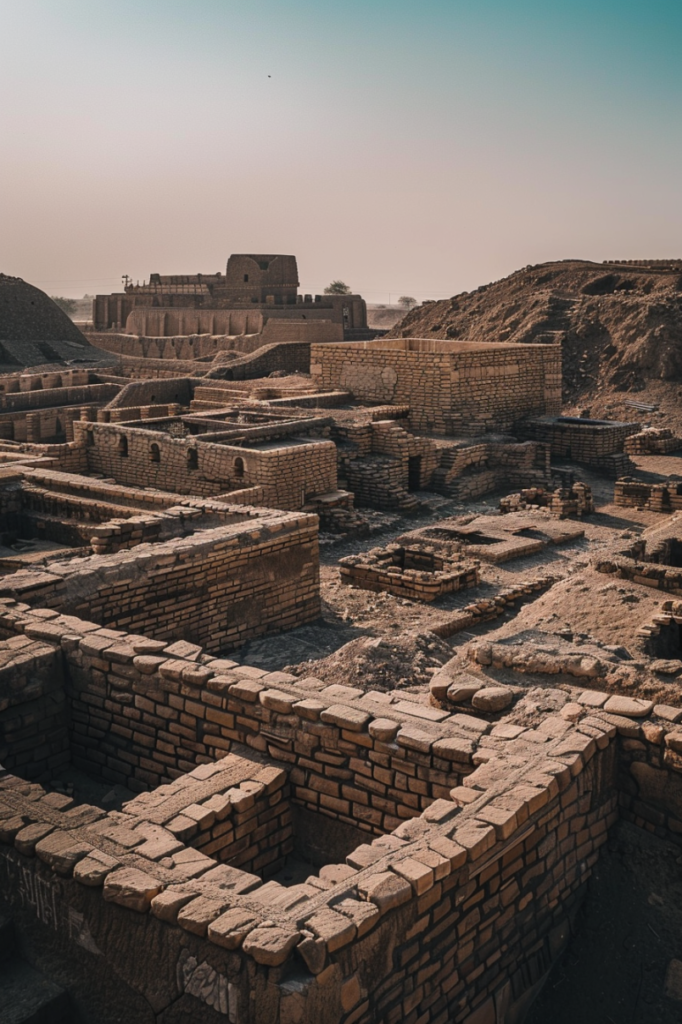
The Indus Valley Civilization’s Decline
Archaeological evidence suggests that several major settlements of the Indus Valley Civilization, such as Mohenjo-daro and Harappa, started showing signs of decline during this period.
Urban centers that had once bustled with activity and trade began to witness a decrease in population and economic vitality.
Possible environmental changes
Environmental factors likely played a crucial role in the decline of the civilization.
The region faced challenges such as unpredictable floods, prolonged droughts, and shifts in the course of the Indus River.
These environmental changes could have disrupted agricultural practices, led to shortages of food and water, and destabilized the urban centers that relied on the river for sustenance and trade.
Weakening of central authority and trade networks
The once-strong central authority that governed the Indus Valley Civilization began to weaken during its decline.
Political fragmentation and internal conflicts may have contributed to a loss of centralized control over the vast territory.
As a result, trade networks that had facilitated economic prosperity and cultural exchange gradually faltered, further impacting the stability of the civilization.
Depopulation of urban centers
One of the most notable consequences of the decline was the depopulation of some of the largest urban centers.
People abandoned cities like Mohenjo-daro and Harappa, moving towards smaller settlements or migrating to other regions altogether.
This mass exodus from urban areas marked a significant shift in the social and demographic landscape of the Indus Valley.
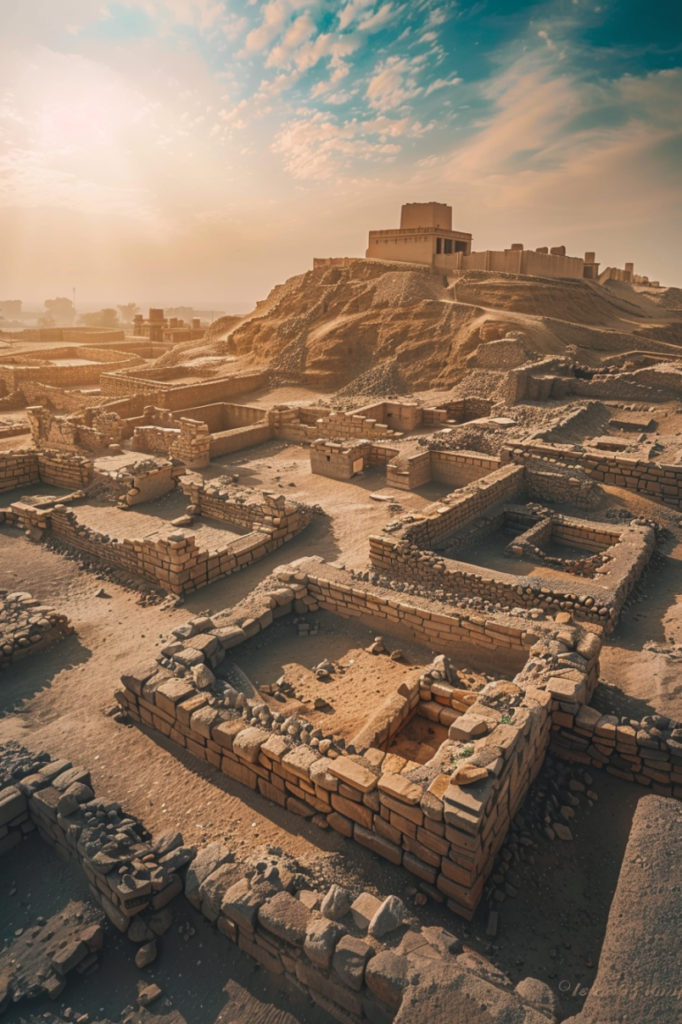
Theories about the Decline
The decline of the once-flourishing Indus Valley Civilization, which occurred between 1900 and 1300 BCE, has intrigued scholars for decades.
Several theories have been proposed to explain the factors that contributed to its downfall.
Environmental factors and climate change
Environmental changes played a significant role in the decline of the Indus Valley Civilization.
Shifts in the course of the mighty Indus River, unpredictable floods, and prolonged droughts could have severely disrupted agricultural practices.
The civilization heavily relied on the Indus River for irrigation and trade, and any changes in its flow or availability would have had dire consequences on food production and water supply.
Overexploitation of resources
The rapid growth and urbanization of the civilization may have led to the overexploitation of natural resources.
As cities expanded and populations grew, there was increased demand for timber, fuel, and agricultural land.
This overexploitation could have resulted in deforestation, soil degradation, and depletion of essential resources, ultimately leading to scarcity and economic strain.
Social unrest and internal conflicts
Internal conflicts and social unrest within the Indus Valley Civilization likely contributed to its decline.
As urban centers expanded, disparities in wealth and resources may have emerged, leading to tensions among different social groups.
Political instability and weakening of central authority could have undermined governance and trade networks, further exacerbating societal divisions and economic decline.
Invasion by external groups
While less supported by archaeological evidence, some theories suggest that external groups or migrations from neighboring regions may have played a role in the civilization’s decline.
These external pressures could have disrupted trade routes, introduced new cultural dynamics, and potentially contributed to the breakdown of established political and social structures.
The Lasting Legacy of the Indus Valley Civilization
Although the Indus Valley Civilization declined around 1900 BCE, its influence continues to captivate and inspire us today.
Achievements in urban planning
One of the standout features of the Indus Valley Civilization was its advanced urban planning.
Cities like Mohenjo-daro and Harappa were meticulously designed and well-organized:
- Grid layouts: The streets were laid out in a grid pattern, which made navigating the city easy and efficient. This kind of planning is still used in modern cities today.
- Drainage systems: These systems included covered drains along the streets and individual house drains that connected to larger public drains.
- Public baths: Large public baths, such as the Great Bath of Mohenjo-daro, show the importance they placed on hygiene and community life.
Engineering marvels
The engineering skills of the Indus Valley Civilization are evident in their impressive infrastructure:
- Granaries: They built large granaries to store surplus grain, ensuring food security for their communities. .
- Wells and water management: Numerous wells and water storage facilities provided a reliable water supply for drinking and irrigation. .
- Brick technology: They used standardized baked bricks for building, showing advanced knowledge of materials and construction.
Craftsmanship and artistry
The Indus Valley Civilization was known for its skilled craftspeople and artists:
- Pottery and sculpture: Artisans created finely crafted pottery and sculptures, often decorated with intricate designs.
- Bead making and jewelry: They produced beautiful beads and jewelry from materials like carnelian, lapis lazuli, and gold.
- Metalwork: The Harappans excelled in metalworking, creating tools, weapons, and decorative items from copper and bronze.
The Indus script
Although the Indus script remains undeciphered, it highlights the intellectual achievements of the civilization:
- Inscriptions and seals: The script appears on numerous seals, pottery, and other artifacts, suggesting it was used for administrative and possibly religious purposes.
- Mystery and inspiration: The ongoing efforts to decipher the Indus script continue to inspire linguists and archaeologists.
Influence on Modern Society
The legacy of the Indus Valley Civilization goes beyond its immediate time and place:
- Architectural inspiration: Modern architects and urban planners draw inspiration from the advanced planning and construction techniques of the Harappan cities
- Historical and cultural significance: The civilization’s achievements contribute to our understanding of human history and the development of early complex societies.
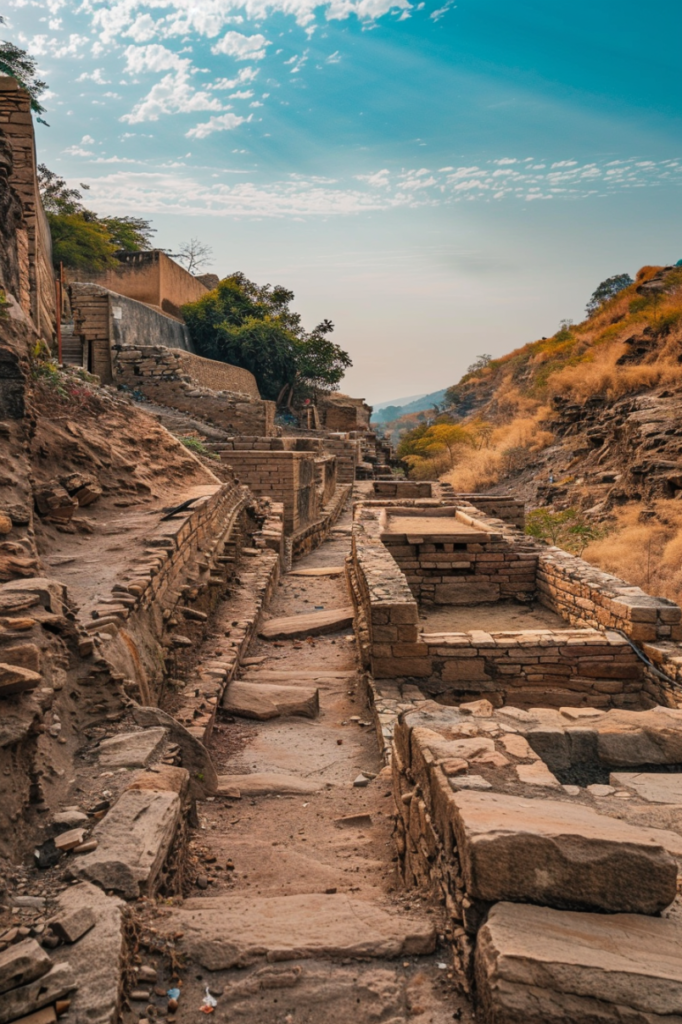
- Read also: Unveiling: How Did the Mycenaean Civilization Meet Its End?
- Read also: Unraveling the Mystery: What Happened to the Minoan Civilization?
Conclusion
The Indus Valley Civilization is a testament to human achievement and resilience.
From its early beginnings to its eventual decline, this civilization left behind a rich legacy that continues to captivate and inspire us today.
As we continue to unravel the mysteries of this ancient civilization, we are reminded of the importance of understanding and appreciating the complexities of human history.

